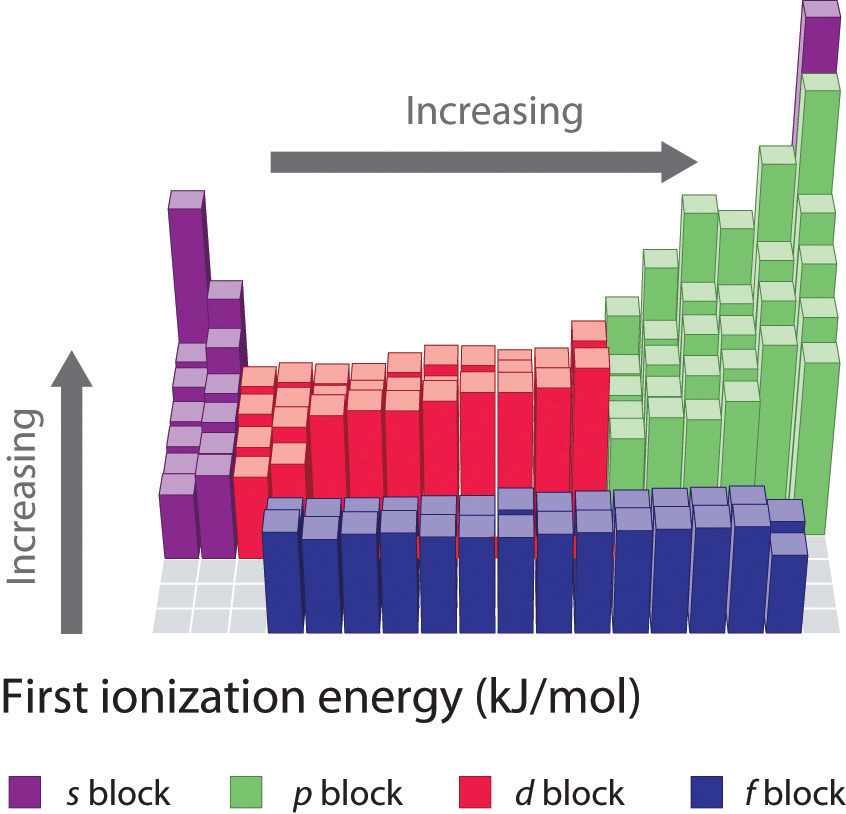Ionization Potential

source : socratic.org
Ionization Potential :
“It is equal to the energy required to remove an electron from the outermost shell of an isolated gaseous atom.” Unit of I.P. is eV/atom or KJ/gm-atom & is represented by I. It is also called ionization energy.
Question: The value of second Ionization potential of an element is always greater than first Ionization potential why ?
Solution :
After the removal of one electron from the neural atom, the effective nuclear charge of the cation is increased . Therefore electrons of outermost shell of the cation are attracted towards the nucleus by greater force. Hence it becomes difficult to remove the second electron from the outermost shell of cation. Hence greater amount of energy is required to remove second electron . So second Ionization potential of an element is always greater than first Ionization potential .
Similarly Ionization potential third is greater than second Ionization potential .

Variation in Ionization Potential:
Variation in group:
I.P decreases on moving down the group.
Reason: on moving down the group number of shell increases.
a) The distance of the electron present in the outer most shell increases from the nucleus.
b)Due to screening effect of electrons present in the inner shell of elements. The effective nuclear charge decreases.Therefore electrons of outermost shell are attracted towards the nucleus by lesser force. It is easy to remove electrons from the outermost shell.Therefore less amount of energy is required to remove the electron i.e I.P decreases.
Variation in a period:
In period, number of shells remain same but effective nuclear charge increases. Therefore the distance of electrons of the shell decreases from the nucleus. Hence electrons of the outermost shell are attracted by greater force.Then greater amount of energy is required to remove electron from the outermost shell. Thus I.P increases.
Factors on which I.P depends:
- Atomic radius
- Nucleus charge
- Presence of half filled and full filled orbitals.
-
Screening effect.
Note: In a period alkali metals have lowest and inert gases have highest I.P.
Question: why first I.P of nitrogen is greater than oxygen?
Solution :

Electronic configuration of outermost shell of nitrogen is ns2,np3 In this case p orbitals are half filled. According to Hund’s rule half filled and full filled orbitals are more stable. Therefore it is difficult to remove electron from half filled p-sub shell. Hence first I.P of nitrogen is greater than oxygen.
Question: why I.P of phosphorus is greater than Sulphur ?
Solution:

Electronic configuration of outermost shell of P is ns2,np3 In this case p orbitals are half filled. According to Hund’s rule half filled and full filled orbitals are more stable. Therefore it is difficult to remove electron from half filled p-sub shell. Hence first I.P of P is greater than S.
Question: why I.P of Be is greater than Boron ?

Electronic configuration of outermost shell of Be is ns2. Thus the outer s-subshell is fullfilled. According to Hund’s rule half filled & full-filled orbitals are more stable. Therefore higher amount of energy is required to remove electron from ns2. Therefore first I.P of Be is greater than Boron.
Question: Arrange N ,O , F in the decreasing order of their I.P.
Solution :
F > N > O
Question : Arrange Be , B & C in their decreasing order of I.P ?
Solution :
C > Be > B
Read more articles at chemistryonline.guru







